On the Preserve: Fat and Sassy Goats
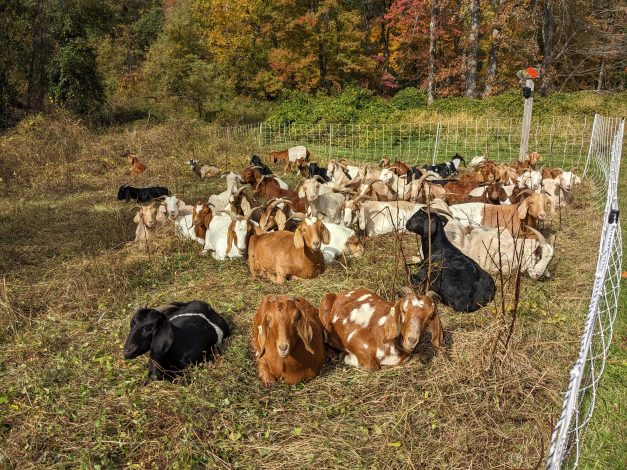
There are many ways to battle the various invasive plants that are found throughout Westchester County. One extremely effective way is ecologically prescribed goat grazing. We were lucky to work with the local herd Fat and Sassy Goats for two weeks up at our Cliffdale fields – the herd of 85+ grazing goats hired to munch through the invasive vegetation and convert it into nitrogen-rich pellets, helping to transform this area of the preserve and give nature the boost it needs to reset the land.
Can any goat be a grazing goat?
No – it takes a very special type of goat to be a grazing goat. There are genetic differences between meat goats, dairy goats, and grazing goats. Grazers are bred to be out in pasture and are trained to eat browse (plants) instead of feed. A herd of 30 goats is ideal for optimal brush control, so temperament matters! There are herd dynamics at play – the goats usually determine a leader and follow that dominant goat. Thirty goats per pen creates a little bit of competition, which encourages the goats to eat more.
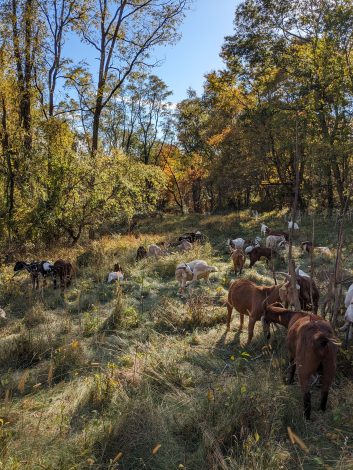
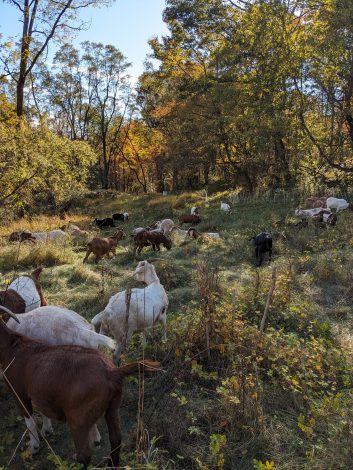
Each grazing goat eats about five pounds of vegetation per day. They can stretch up to reach a height of six feet, focusing on removing leaves and the tops of woody plants, not the entire stems. Smaller goats are great for grazing, because they can get underneath dense brush and clear a path for other goats to follow. Their clearing makes it easier for our Stewardship team to access problematic trees like Tree of Heaven for easy removal.
To be most effective, we targeted a specific area of the preserve for clearing. The fields surrounding Cliffdale Farm are overrun with invasive woody plants and vines like Porcelain Berry, Linden Viburnum, and Multiflora Rose. The team from Fat and Sassy Goats broke the land into small sections, or “paddocks,” in which the fenced-in goats are encouraged to eat through the entire section. Then, they’re moved to another “paddock” and they munch through that vegetation.
“Smaller paddocks and frequent moves is a better approach for both plant and animal health. By concentrating the goats in a smaller area, they are more likely to eat all the targeted, unwanted vegetation, rather than selectively browse only their favorite plants in a larger area.”
— Fatandsassygoatsny.com
These plants provide the goats with a nutrient-rich diet and all our unwanted invasive plants get turned into natural fertilizer via goat digestion. 97% of the seeds that pass through the digestive tract of a goat are not viable, which makes them great for mitigating unwanted plant growth. It’s a win-win!
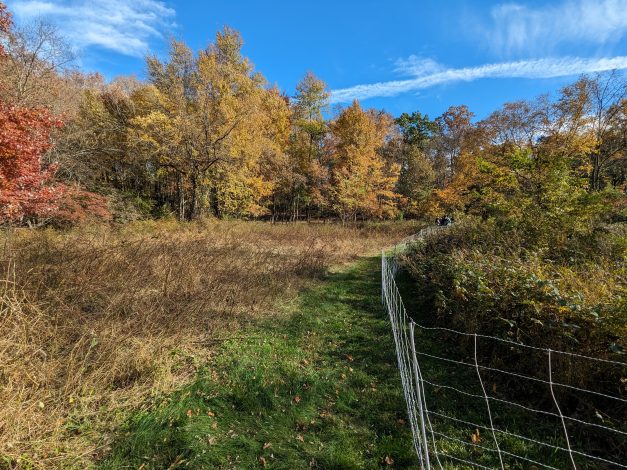
Above you can see a great example of before and after grazing. The right side of the photo shows a section of un-grazed land, and on the left is what it looks like after grazing.
To learn more about the Fat and Sassy Goats, visit their website: fatandsassygoatsny.com
Watch below to see the goats in action!

ABOUT THE AUTHOR
Lauren Zallo
Communications and Marketing Manager


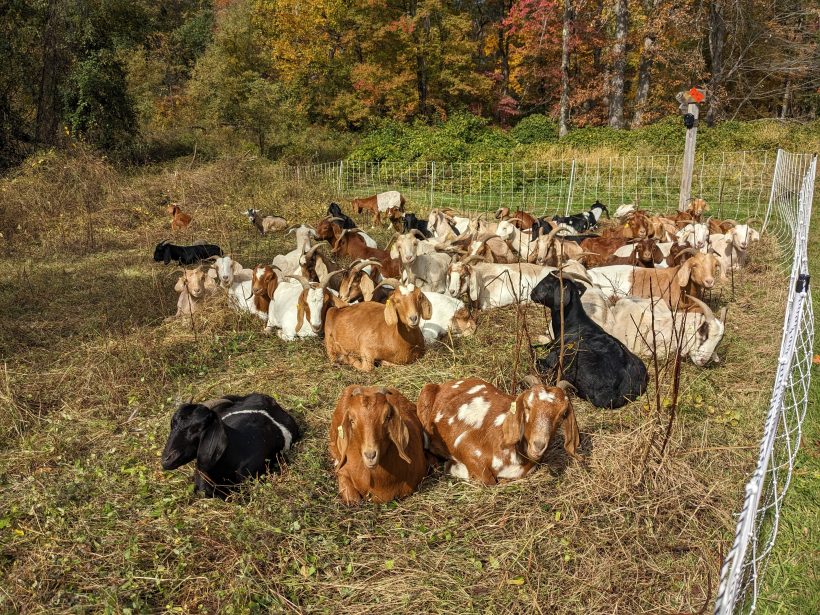
Leave a Reply